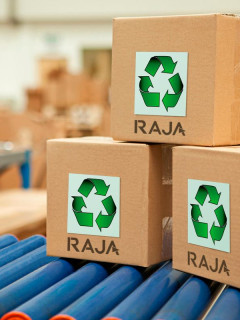The returns policy is a crucial issue for e-commerce. Customer experience shows that while product returns are still a barrier to online purchasing, they are also an important driver of consumer satisfaction
Focusing on your returns policy is therefore essential in your e-commerce strategy: the transparency of your policy will help you gain the trust of Internet users and thus increase your sales.
Here are the 5 key points for writing the clearest and most effective e-commerce returns policy for your website.
This article was updated in January 2021.

1 – Write your GTCs well
These are mandatory for any online business and must be transparent and understandable!
Be concise: a text that is too long will quickly tire your customer, who may feel that you are trying to drown him in information due to a lack of transparency.
Focus on conciseness and structure, make a clear list of your conditions of sale and therefore of return.
-
Accurate ;
-
Complete;
-
Clear and accessible (not lost in a ghost page on your site);
-
Controllable in its application.
In particular, include the X-day period your user has to return products, the procedure for requesting a return, or the cases in which goods cannot be taken back (defective or damaged items, for example).
For e-tailers, facilitating returns means reassuring potential buyers and increasing their conversion rate. The clearer and simpler the returns procedure on the merchant’s website, the better the chances of conversion. The little extra is allowing free returns.
Florian Cimetierre, co-founder of ITinSell
2 – Explain the withdrawal period in your e-commerce return policy
Since the Hamon law of 17 March 2014, the consumer has a 14-day period in which to reverse a purchase decision in the case of distance selling (Internet, correspondence or telephone): this is the legal right of withdrawal. In the context of this exercise of the user’s right of withdrawal, the seller must then reimburse the buyer for the product. This law has helped to make online purchases safer for consumers.
According to the Hamon law, the costs of returning the goods are to be borne by the buyer unless the seller takes them for himself or if he neglected to state in his return conditions that the costs would be borne by the consumer (Article L. 121-21-3 al. 2 of the Consumer Code).
The legal time limit is therefore fourteen days, but many brands extend these time limits to stand out from the competition and offer customers more flexibility.
Important: the withdrawal period begins on the date the customer receives the product, not the date it is dispatched.
3 – Knowing the reason for the return
The reason for the return is an interesting element to take into account:
- If the customer is disappointed with the product received, if it does not seem to conform to its initial description, or if the product is damaged or broken, you can improve your description sheets and monitor what is happening with your carrier;
- On the other hand, if the product is returned because it is not to your liking, because it is too small or too big, these are the laws of e-commerce and there is not much you can do about it.
But it will still allow you to get to know your customers better, to be able to alert them if their size comes back into stock, for example.
It also allows you to spot problems with products: if their return rate is abnormally high, a small satisfaction survey on the product could be useful.
Important: ask buyers for the reason for the return on the return form or directly in the online return form. You give them a space to express themselves, and you collect valuable information.
4 – Communicate about the return of the package
In order to avoid any dispute, you must communicate well about the e-commerce return policy of your site.

4.1 What are the refund conditions?
-
Is the price of the item including VAT refunded partially or totally?
-
How long will it take for the refund to be made? 15 days?
4.2 The conditions for costs and returns
Information on whether or not return delivery costs will be covered must be given to the consumer “in a legible and comprehensible manner” before the purchase.
If this information is not included in the GTCs, the burden of the return delivery costs remains with the seller.
Good to know: many consumers say they would buy more if the return costs were free!
If the costs are to be borne by the buyer, the merchant site should inform the buyer in advance of the cost of the return in the event of withdrawal.
As for the conditions of the return,the packaging of the package is often a source of problemsit is better to communicate in advance and specify whether :
-
The customer can use the original packaging: this may be the case if you have chosen to use so-called round trip packaging, which is strong enough to protect the goods over two delivery rounds;
-
The customer can use any packaging.
In the case of returns of fragile or electronic products, it is best to inform the buyer of the procedure to follow.
4.3 Tracing the package (tracking code, etc.)
It is important to be able to follow the progress of the delivery of parcels on the seller’s side and on the buyer’s side. Chronopost, Colissimo or Mondial Relay all offer a tracking number which allows precise tracing in the event of a problem or dispute.
Good to know: leaving several different return solutions available to your customers is a good idea to improve your e-commerce return policy. For example, why not offer them the possibility of returning their parcels, not only via the traditional post office, but also via a point-relais?

5 – The essential information to be indicated for trademarks
And finally, here are the last two pieces of information that should not be omitted when writing your e-commerce return policy:
-
If you wish to modify your return conditions: this is possible, but be sure to insert a clause in your T&Cs specifying that you reserve the right to modify these conditions, provided that they respect the legislative framework in force;
-
If not all products are returnable: you may not accept returns of fresh products, customised or made-to-measure products, open material, etc.
The objective for brands is to communicate clearly, accurately and transparently about their company’s e-commerce returns policy.
This will allow them toimprove the customer experience on their site.
Conclusion: the three key points to remember
- The clearer, more precise and more transparent your e-commerce returns policy is, the more you will avoid logistical and legal problems.
- Return conditions are a crucial aspect of customer satisfaction.
- The reasons for returns are important data for brands, which allow them to continuously improve their customer experience.

















